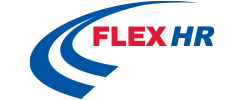The Role of HR in Identifying AI Opportunities and Risks in the Workplace
As technological innovations are applied in the workplace, they bring changes and challenges. One area of technology that will have greater future applications in the workplace is Artificial Intelligence (AI). As AI technology is integrated into government and business organizations, HR needs to be aware of its potential impact.
AI could potentially shift HR’s role. In the past, HR reactively tries to figure out what to do with workplace changes, leading to burnout and frustration.
Instead, HR needs to take a more proactive posture, strategically engaging with workplace applications of AI. HR needs to anticipate problems by engaging in discussions about integrating AI technology in the workplace, and solve them before they arise.
As Dr. John Cascone, Senior Vice President at Flex HR, advises, “This is an area that would do the HR field well to be tracking, and to help develop a counsel with organizations for what the potential dangers are as well as the opportunities.”
HR needs to understand the possibilities and challenges of AI for the future workplace and help mitigate the unfavorable effects of AI on worker safety, health, and well-being.
AI Opportunities for the Workplace and HR
There are many potential applications for HR in the workplace, including hiring and orienting new employees, screening applicants, collaboration, planning, training, problem-solving, modeling, forecasting, and much more.
For example, AI could be used to recruit, onboard, pre-screen, and assess candidates and reduce unconscious biases during recruitment.
It could also be used to increase productivity and efficiency, one of the main concerns of businesses. AI could do this by managing repetitive tasks through chatbots. Soon, as much as 47% of organizations may use chatbots, and 40% will adopt virtual assistants to better support their customers.
AI can also help with employee learning and training. Some organizations, such as Honeywell, also use AI, AR [Augmented Reality], and VR [Virtual Reality] to record transferable skills and teach them to the next generation of employees.
Increasingly, businesses want to use robots to perform functions previously done by employees. Gartner research shows that 77% of retailers use AI technology, the top users being warehouses and health care organizations.
Remote conversational technology could be applied to planning and could be especially helpful in data processing, allowing employees to debrief on a project and identify assets and problems. What they learn could then be transferred to new employees who might face those types of scenarios in the future.
There are other endless applications for AI technology, such as working from home and building virtual simulations.
HR can help organizations learn to use these technologies to train employees and transfer skills. They can help organizations outsource to AI for recruiting. They can also help find ways organizations can use the technology for customer service.
AI Workplace Application Limitations and Potential Risks
As exciting as it is to think about the potential benefits of using AI in the workplace, we need to also note its potential risks.
As with any kind of change, organizations will inevitably face employee fear and resistance. There may be additional issues with integrating AI technology, such as morale erosion as employees feel replaced or cut off from other human beings.
There are also dangers of breaches in confidentiality. For example, many AI technologies have facial recognition software. Companies will have facial and possibly health data on their employees when they use this technology, and companies will need to protect against hackers.
HR also needs to help set some guardrails so that companies don’t violate employee rights in their implementation of AI technology. One of the lines that we need to draw is to encourage companies to stop pushing efficiency over effectiveness and to start supporting the need of employees to have personal lives.
If HR doesn’t help companies sort out these issues before they arise, companies could be faced with legal and morale issues. HR can’t control the growth and application of AI technology, but they can help companies understand potential hazards as well as benefits, and help with implementation.
The Next Steps for HR
To stay ahead of technology’s impact in the workplace, here at Flex HR we are considering taking the following next steps:
- Learning more about CIAP HR Applications [HR DSSs, HRIS]
- Researching IEA [Intelligent Employee Assistant] applications and employee responses
- Exploring collaborations with CIAP vendors like Kore.ai
- Planning focus groups with long-term clients
Our consultants use what we learn to help companies use AI technology effectively and safely. We help businesses implement this technology for performance management systems, for career planning, as well as to help them grow an employee and keep them on board, increasing value for the person and for the company.
Contact us now to get the solutions to maximize your HR needs today!

